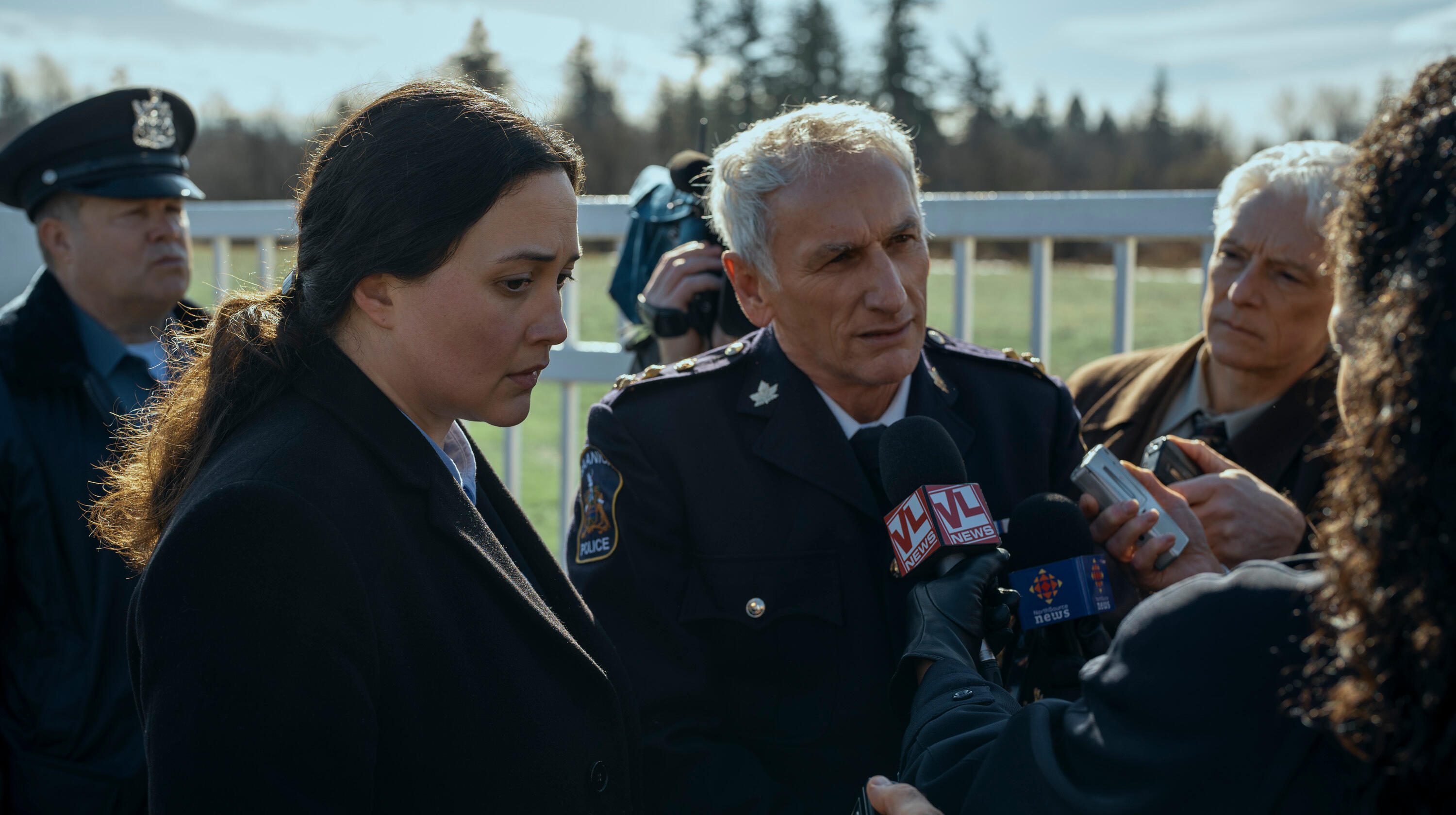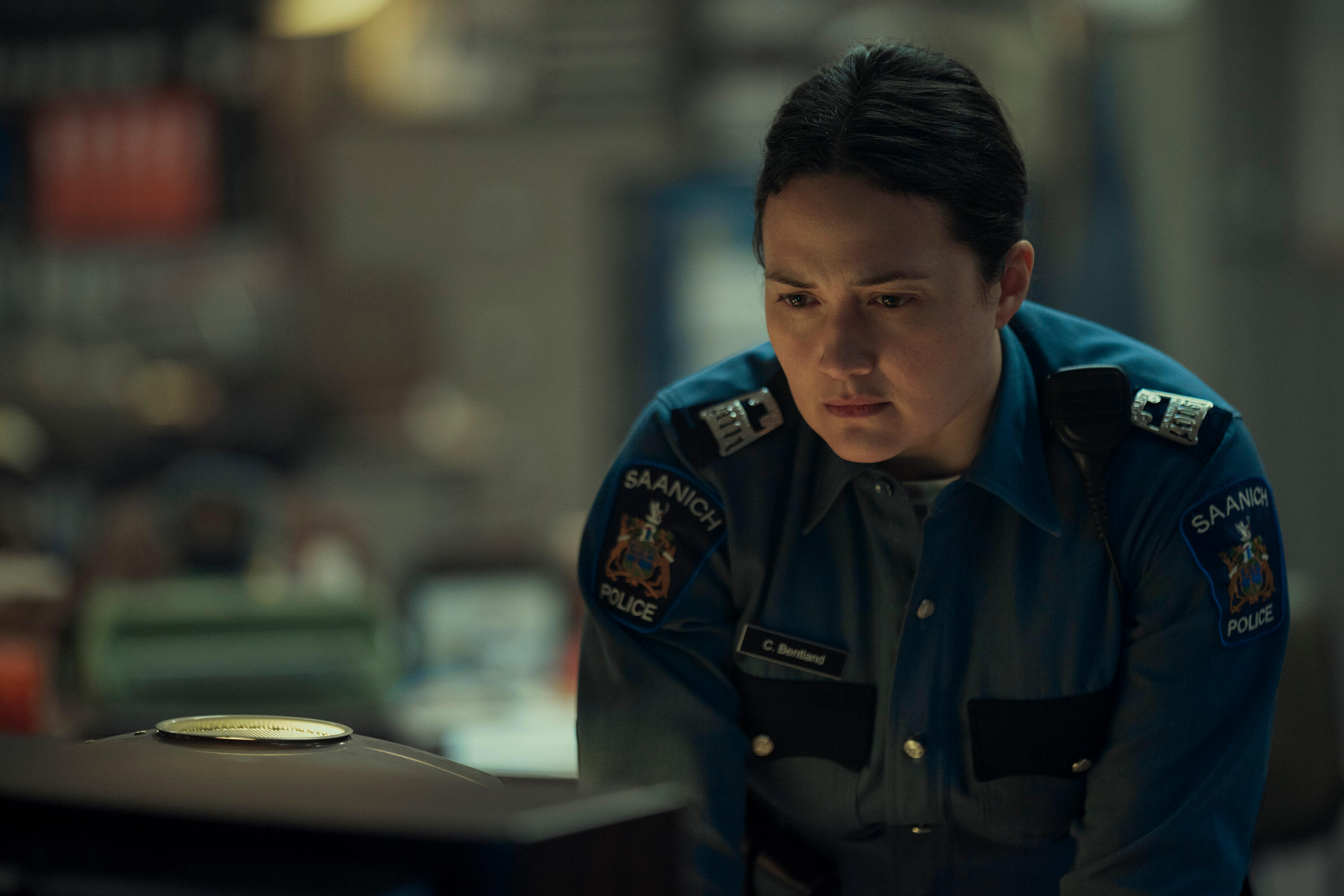In Hulu’s ‘Under the Bridge,’ the murder of 14-year-old Reena Virk begins the investigation that leads to several things unraveling about the town and its residents. The case is investigated by Cam Bentland, a Native woman who was adopted by a white family and grew up to join the police force, like her adoptive father and brother. The more Cam found out about Reena, the more she empathized with her. The sense of belonging that Reena longed for is exactly what Cam felt growing up and, in some ways, still does as an adult. Being a Native person in a predominantly white community and being a police officer on top of that was enough for Cam to feel othered in the place where she grew up. In the final episode, she discovers something that rewrites everything she thought she knew about herself.
Cam Discovers the Truth About Her Adoption
When Cam was adopted by the Bentland family, a story was told to her about the circumstances of her adoption. She’d been living at Seven Oaks when the Bentland family found the call for her adoption. Later, he adoptive father, Roy, told her that she had been in an abusive environment. According to him, she had several injuries when she was brought under the care of the Bentland family. This created the image that Cam had been rescued from her toxic family who didn’t care for her and had left her at Seven Oaks because they didn’t want anything to do with her anymore.

This was the story Cam accepted for years until Seven Oaks was shut down, and her file from her time in the place was given to her. In it, she discovers an ad with her picture, calling for her adoption under the AIM program. A quick research reveals that AIM stands for Adopt Indian and Métis project, which wasn’t a simple adoption program. This real program was in effect in the late sixties and was funded by the federal Department of Health and Welfare. Native children’s photos with descriptions to attract potential families were put up as ads in different forms of media, including television and newspapers. It was specifically targeted towards Native children because so many of them had been torn away from their families and brought under the state’s care that eventually, they had to come up with a plan to have the “overrepresented” kids adopted.
When Cam discovers that she was adopted as a part of the AIM project, it becomes clear to her that there is much more to the story. Further investigation reveals that the injuries around the base of her spine, which her father had referred to earlier, weren’t exactly so. It was just a birthmark. It also became clear that she was actually born into a good and loving family but was forcibly removed from their care and put in Seven Oaks, where she was later put up for adoption. All these years, while she felt the sense of not belonging, her family had been just a ferry ride away. She could have lived with her people, she could have grown up amongst them, but instead, she was forced to live in a community that never fully accepted her, and worse, she became part of the very system that was responsible for tearing her away from her family.

When Cam confronts Roy about it, he claims he didn’t know anything about how she was separated from her real family. All he knew was the story they were told by Seven Oaks and the people at the adoption agency, and this was what they believed the entire time. But Cam knows there is an insincerity in Roy’s answer. How could he not have known what AIM was all about? How, as a police officer, couldn’t he have tried to find out more about Cam’s real family?
Whatever the level of truth in Roy’s claims, Cam knows she cannot live in Victoria anymore. She resigns from her job, no longer willing to serve as a police officer. Before that, she tracks down her real family and discovers that they live somewhere in North Vancouver. Before figuring out what to do next in her life, she decides to visit them and take the trip that she had been waiting for all her life. In the last scene, we see her looking at her family from a distance, happy that she has finally found her people. Her meeting with them continues off-screen and keeps the ending open for Cam as the uncertainty of her next step makes her future full of possibilities. Now, at least, she doesn’t have to wonder about her very existence, her origins, and where she truly belongs.
Read More: Is Lily Gladstone’s Cam Bentland Based on a Real Police Officer?


You must be logged in to post a comment.